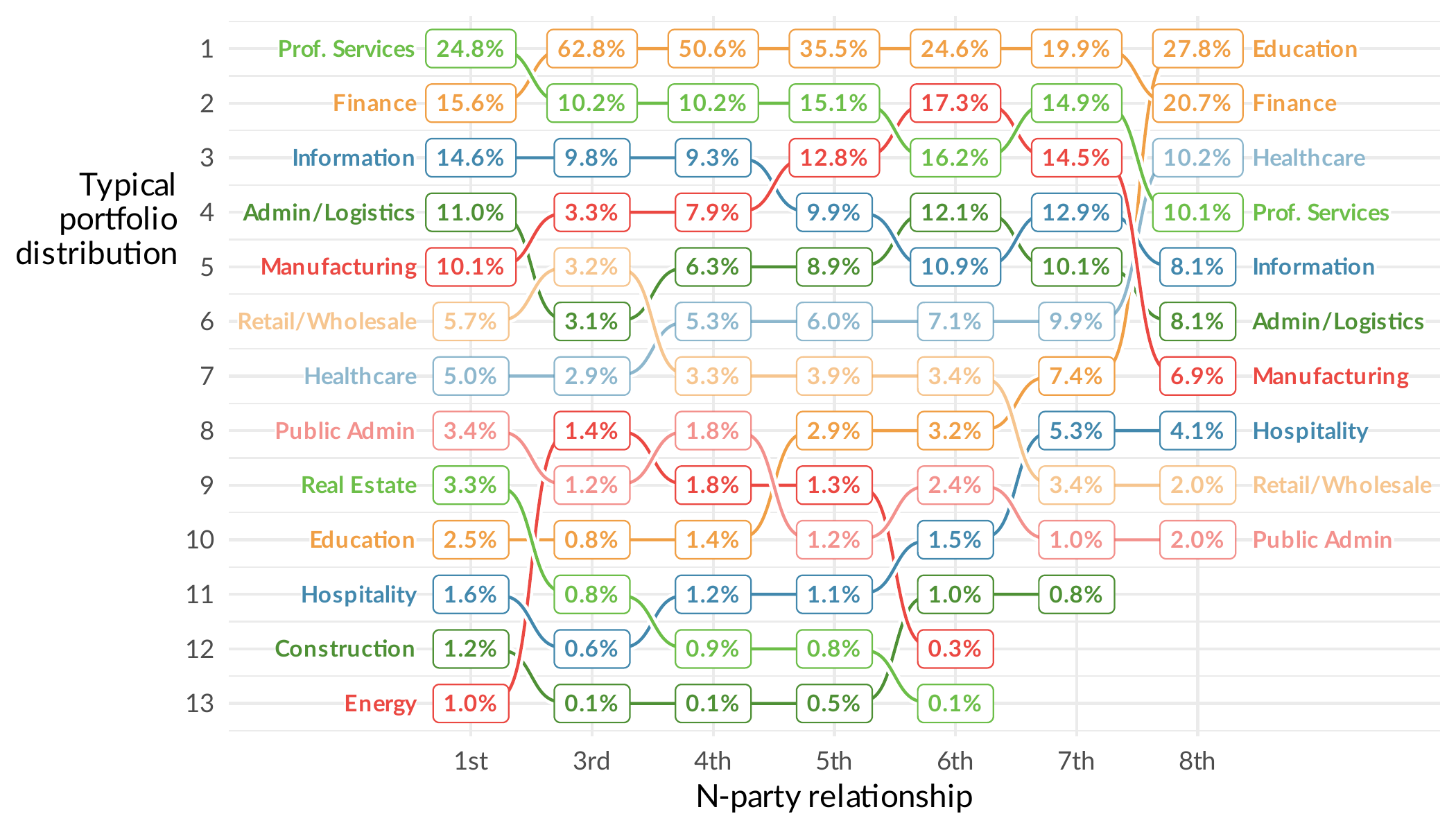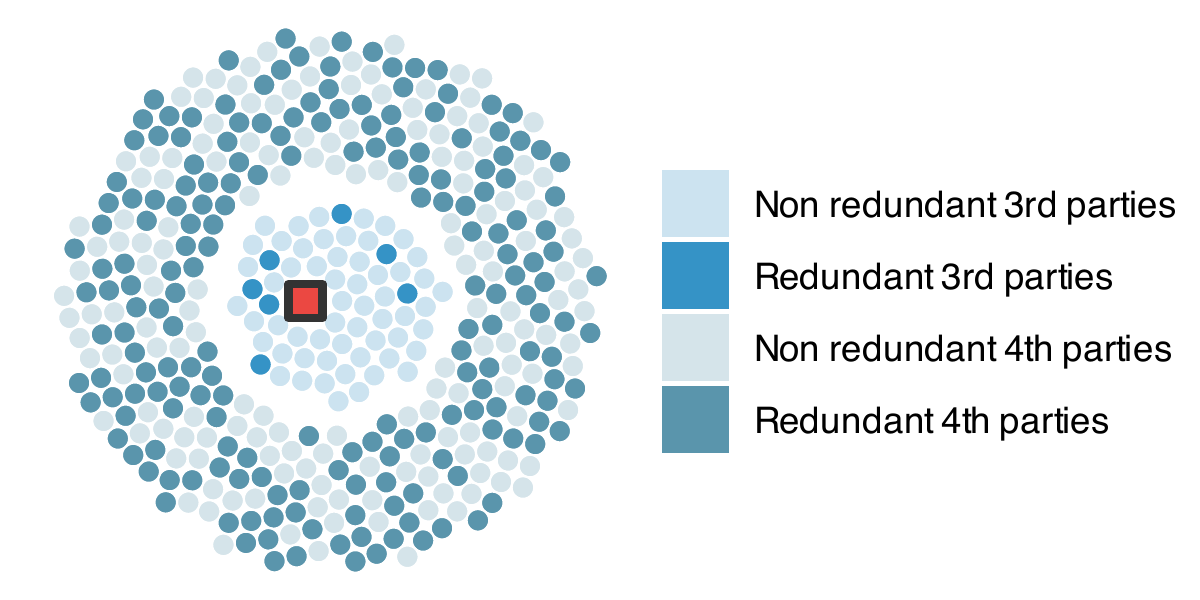With the marketplace covering the entire world today and the supply chain focused on just-in-time delivery, it's more important than ever to practice good supplier risk management. Mitigating and managing vendor risk and supply chain risk is vital for survival in today's growing marketplace.
You never truly know what you're getting into when you work with a third-party vendor. Therefore, supply chain risk management and supplier risk management are two key components to any supply chain management strategy. With the supply chain being protected and supported by Software-as-a-Service (SaaS) solutions, it's even more important than ever to mitigate supplier risk.
Investing in good supplier risk management (also called supply chain risk management, vendor risk management, or third-party risk management) can help your organization avoid damage to your reputation from a supply chain disruption, along with financial losses. However, before you decide on a supplier risk management strategy, it's important to understand what it is. RiskRecon, a MasterCard company, is here to help—so let's talk about staying on top of supplier risk.
What is supplier risk management?
The main goals of supplier risk management include identifying risks and developing a strategy to control and mitigate those risks to your organization. Supplier risk is a third-party risk related to the supply chain vendors you use to help procure and move your goods. Without good supplier risk management, you could be causing your organization financial risk due to a supply chain disruption or another issue.
There are multiple types of supplier risk you want to be aware of as you learn about supplier risk management. Potential risks to your business may come from any of the following:
· Financial Risk
· Environmental Risk
· Ethical Risk
· Economic Risk
· Political Risk
Even one potential risk can lead to a reputational risk for your company. It's important to be aware of the risk factors with a third-party vendor before you create a supplier relationship. Supply chain risk is a real issue in today's marketplace, and supplier risk management should be taken very seriously.
Why do I need to plan for supplier risk?
You need third-party risk management for several different reasons. First, with more and more companies relying on third-party suppliers to deliver products and services, it's more important than ever to have a plan for supplier risk. Without a good plan, you might deal with a supplier failure that causes a major reputational risk for your company.
A good supplier relationship management strategy can help to mitigate risk for your organization. It's important to look at specific risk factors, such as compliance, analytics, past supply chain disruption, and supplier failure.
How does the supply chain lead to risk?
You will take on risk when you count on third-party vendors to handle your products and services. Any company depending on the supply chain is at risk and must choose vendors carefully.
While there is some inherent risk for any company using a supply chain, risk mitigation can be done by choosing reputable vendors.
What makes a supplier high-risk?
Any supplier providing you with a service that requires them to have access to important data is a high-risk vendor. For example, if you hire a company to shred important documents, they now have access to the data enclosed on those documents.
A supplier can also be considered high risk if they could cause significant disruption to your organization and your supply chain if they were suddenly lost. The bottom line: when a vendor can ruin your reputation through their own failure, you are at a higher risk.
How do I know if I'm vulnerable to supplier risk?
Evaluating supplier risk properly through a vendor risk assessment will help determine if you're vulnerable to vendor risk. You want to look at the different risk factors and create a risk profile for all potential vendors.
This process starts with determining the scope of your supplier relationship and looking at any potential risks that come from it. Next, you will likely want to do an internal audit of all your vendors and a full risk assessment, which will helps show you the vendor risk you might be facing.
Can supplier risk be eliminated?
Supplier risk cannot be fully eliminated. There will likely be vendors you need to handle sensitive data for you, and you will have to develop a trusting relationship with those vendors. Plus, with the supply chain operating the way it does today, just about any vendor along the delivery path of a product or service can put your company at risk.
However, you can use good supplier risk management to help with risk mitigation. When you have a strong supplier relationship management strategy, you will be in better shape to avoid major risks to your organization.
How do I come up with the best risk management system?
One of the best ways to build your management program is by working with an expert on managing third-party risk. You want to ensure you properly prepare for risk management with a third-party supplier or vendor. Unless you have an expert on your staff in supplier risk management, it's best to trust an expert in this field.
How can RiskRecon help me?
If you're ready to take supplier risk management seriously, it's time to request a RiskRecon demo. We will show you how our supply chain risk management can help you avoid major risks to your reputation and your company. With our help, you will gain greater clarity when it comes to the supply chain risk you might be facing with third-party vendors.









